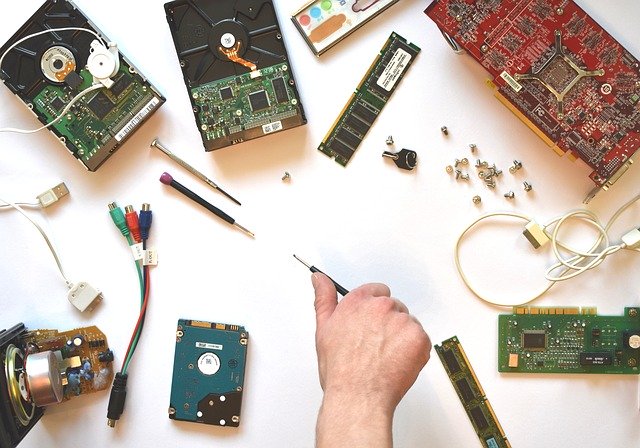The end goal of the modern cloud is frictionless cloud computing. Frictionless cloud computing is platform agnostic, mobile friendly, and transparent. Recent developments in technology, evolution of developmental philosophies, and the proliferation of low-cost, high-performance devices have brought it within reach. This combination of factors will enable the cloud to transcend the current limitations of curreny monolithic cloud offerings which exists today.
The factors shaping the quest for frictionless and mobile cloud computing can be split into both technological and cultural. The technological factors require a cultural shift in order to be practical, while the cultural factors manifest from the adoption of newer technology. Streaming may have been technologically feasible in the era of dial-up, but it made no sense due to the lack of bandwidth. As internet access got cheaper and faster, things which wasted bandwidth became more acceptable.
The growth of XaaS (Anything as a Service), containerization and microservices, and edge computing have enabled the tech behind the goal of a frictionless cloud, but the cultural shift towards BYOD (Bring Your Own Device), mobile workspaces, and risk aversion have made these technologies more acceptable and practical. Technology provides the means, and culture provides the way forward.
The Quest For a Frictionless Cloud

The frictionless cloud is a cloud environment which integrates with a company and its ecosystem without any kind of friction. Friction includes anything which hinders the adoption and usage of this technology. With the growth, evolution, and widespread adoption of SaaS and the push for more data-driven methodologies, integration of each service became more and more important.
What do you do on vacation when you need to hop onto a cloud instance but don’t have an approved device or work computer? In our increasingly connected world, being able to respond to emergencies efficiently and quickly can make or break a company. Your emergency doesn’t care that you’re on vacation. Some offerings are completely agnostic to what tools you use, others aren’t.
The new SaaS or even IaaS offering is easy to get going, but what happens when you need it to talk to some other offering? Some work, others don’t. The big new sell is in making things talk and getting data in, out, and between products. Luckily, technology is making this easier and easier and cultural shifts in businesses is making it more desirable.
The Technology Behind the Frictionless Cloud

The traditional SaaS architecture lead to bigger and better things with PaaS and IaaS. Once the floodgates opened culturally, the technology followed suit. XaaS (Anything as a Service) sprung up so that pretty much anything which could be computerized could be turned into a service. Technologically cheap containerization lead to the advent of microservice architectures. Edge computing rounded off the latency issues and works to decentralize the cloud without fragmenting it.
XaaS (Anything as a Service)

XaaS marked both a cultural shift and a technological shift. Once the cat was out of the bag with SaaS, PaaS, and IaaS, pretty much nothing was left off the table. From the software layer, all the way to the infrastructure layer, anything was available as some cloud offering either directly or indirectly. The technological hurdles had been cleared and the precedent had been set.
Once infrastructure became virtualizable, reliability of connectivity reached a certain point, and companies had become accustomed to SaaS and similar, it was easy to sell any and every subset as XaaS. Networking as a Service, Backups as a Service, etc. all became not just available but even preferable.
This shift has also led to a more mobile friendly environment overall of the SaaS and similar options. There has to be a way to access resources for a service, and it’s easy to sell clients on using something they already have, a web browser. More and more services make an app to go along with their service which leads to better mobile computing. With things like Xamarin and other open source tools, it’s harder to have an excuse to not make a mobile version, especially if your competitor has one.
Containerization and Microservices

With the mainstreaming of XaaS came a race to the bottom. The goal was to cut costs and reduce overhead. Fortunately, the old race to virtualization had already come up with a great solution, containerization. Containerization took traditional virtualization and ramped it to 11.
The name of the game was reducing overhead of the VM while improving reliability and performance. Stateless applications were ideal targets to containerize. The more features which could be controlled for in the development cycle, the fewer things which needed to be shipped in the container.
Containerization lead to microservices. Microservice architectures made it easier to extend cloud services and make them more practical. SaaS was a container away for many offerings, but could be extended even easier by throwing in another container. This makes versioning and extensibility easier with a little extra overhead.
You don’t need to spin up a full OS and load an application to act as the glue between products if it just needs to be used at certain points. A container can be spun up or shutdown on demand. A microservice can blip in or out of existence to facilitate a feature which would bloat the overall design if it were baked in.
Edge Computing

Edge computing is the newest in the mentioned technologies. The idea has existed for ages in things like CDNs, but it has rarely been applied at a consumer level before. It just wasn’t practical until more lately. A quad-core system in 2009 was a prince’s ransom, as of writing, a cheap Raspberry Pi for $35 almost fits the bill. Technology has grown by leaps and bounds.
Edge computing is basically a fancy way of saying a local cache which is interactive. There needs to be some way to cache or store remote data, some way to locally store or cache data, and a way to synchronize the changes. Edge computing is typically used where local data usage outstrips available bandwidth and not every change is necessary to keep things fllowing.
For a CDN from Netflix, this means sticking a server inside the pseudo-LAN of an ISP so that a single video is uploaded once instead of on each view, while for a company this may mean a cached application server which synchronizes data. Think of something like OwnCloud or Dropbox, but for more than just files.
You don’t always need everything available and don’t always need the newest version of everything. A small padsite for an oil or gas well doesn’t need to really know about other wells when already drilling, they just need to be able to upload and download relevant data. This becomes even more pressing with remote work over unstable connections. Edge computing makes the edge environment function like the whole without needing the resources of the whole.
The Technology as a Whole
Each of these three technological trends sounds quite disparate on the surface, but they’re each separate fronts for the same battle. XaaS means that many services can be outsourced as necessary. Modern AI solutions have gotten more numerous as the barrier to entry decreased with various AIaaS (AI as a Service) providers like Azure and even AWS. By being able to offload things which a vendor isn’t good at or doesn’t want to focus on, they can focus on commercializing the parts of the service that others don’t want to deal with. Anything can become a service offering which means either a markup or a new revenue stream for the right company.
Containerization makes XaaS more practical for many different offerings, but also makes application development easier for cloud apps. The issue of maintaining the underlying OS and dealing with a traditional devops team is abstracted away. When done right, a containerized environment reduces the complexity of managing traditional stacks with fewer downsides.
Microservice architecture is the push to turn containers into more practical units that can be mixed and matched like building blocks to create something bigger without having to commit from the beginning. Services which normally wouldn’t go together can be glued together with a special purpose microservice which can act as a data munging interpreter between them. Things can be spun up and taken down on demand for greater scalability.
Edge computing is the least developed on the list, but the one which will make the most difference long term. The environment has a cached version which can be used in “offline” situations without harming functionality for the users (except in edge cases). What happens in a Windows domain forest when a tree goes down? If it’s set up right, basically nothing (except maybe a minor mismatch of trivial changes over days). Edge computing aims to apply this principle to something which traditionally had to have an internet connection.
Cultural Factors

Technology is the tool, culture is the usage. Having a screwdriver doesn’t do much if everyone wants to use nails. As the tools become both available and accessible, they become more mainstream and more culturally acceptable. BYOD (Bring Your Own Device) was a joke in the 90’s, but now you can barely find an office without at least one user bringing in their laptop from home.
The concept of BYOD and mobile workspaces combined with the trend of risk reduction have made frictionless cloud computing more of a requirement than before. BYOD lead to mobile workspaces and more remote work in general. Risk reduction became more common due to the economy and as a way offset the unexpected costs for TCO (Total Cost of Operation) for a given product. Companies want a heterogeneous environment with little risk, which used to be a complete contradiction.
BYOD and Mobile Workspaces
BYOD has traditionally been resisted in much of the corporate world until more recently. With better tools to contain devices (like avoiding flat networks) and more and more work being internet based, it’s hard to make a case against BYOD (from a corporate perspective). People will bring their computers whether you want them to or not, and it’s hard to know the difference without a bit of painful setup. How do you argue when someone offers to save you a small pile of money and it doesn’t negatively impact their work?
This cultural change snowballed into remote teams and remote branches which didn’t need to be in the main office anymore but didn’t need a full setup. Mobile workspaces also have become somewhat popular in shops where contractors or freelancers are common. Why rent out a large office when you can rent a tool stack which you provide?
Computers have gotten more powerful over the years, but the pace cell phones have gone makes computers look stagnant. Flagship phones outperform some medium cost laptops. Higher end cell phones also have a resolution which makes even some of the higher end laptops blush. Why can’t someone work off of this computer in their pocket instead of a traditional PC? Because the vendor won’t allow it. Get money involved and all of the sudden mobile computing is far more important.
Risk Reduction

It is a given that companies almost always try to reduce risk and maximize profit. The change is that companies have gotten substantially more risk averse to the point they’d rather pay a higher TCO (total cost of operating) for a product to know that the cost won’t ever change and that they won’t ever be done. It’s an easier sell on a cloud product that the company doesn’t need to maintain hardware, support hardware, or deal with unexpected downtime (cloud vendors obviously inflate this one a bit for sales).
It’s cheaper now, more expensive later, but amortized out works out to cheaper on paper. It’s a bit counter-intuitive but makes sense from a business perspective. The guesswork disappears and the cost doesn’t change. It might cost more, but the cost for next month will be the same as this month (unless your contract is up).
The cloud is also attractive because you don’t have to have someone maintaining it at the same level locally as you would with an on-premise solution. You need someone who can follow instructions from the vendor(s), not a high level tech to orchestrate everything. Even then, with XaaS, you may just outsource that specific job as a service. If someone technical quits, it doesn’t leave you dead in the water. SaaS works out cheaper (in a lot of cases) than the cost of an on-premise solution, the hardware to support it, and the person to make it all work.
Where Culture Meets Technology

The cultural trend to BYOD and use mobile workspaces combined with risk aversion has made cloud computing as a whole an easier sell. Technology has made each aspect more and more customizable and flexible with little impact on the cost to operate the service leading to lower costs and higher margins. The cat’s out of the bag for cloud computing, and now people want it everywhere and on anything. The journey is on for a truly frictionless cloud computing experience.
The light at the end of the tunnel is visible by leveraging XaaS, containerization and microservices, and edge computing. Making anything and everything a service means the ability to offload tangential work to focus on core competencies, or even monetize these tangential services for all-in-one packages. Containerization and microservices make these offerings cheaper and easier to deploy. Edge computing ties it all together to make the end user experience better, while reducing latency and uptime issues.
As the barrier to entry for these technologies gets lower and lower, so will the friction for cloud computing. Mobile computing is here and part of the status quo, the mobile cloud is next. The cultural revolution has already occurred to make this possible, and combined with advances in technology, cloud solutions are going to get smarter, smoother, and frictionless.
Featured image by Free-Photos from Pixabay


